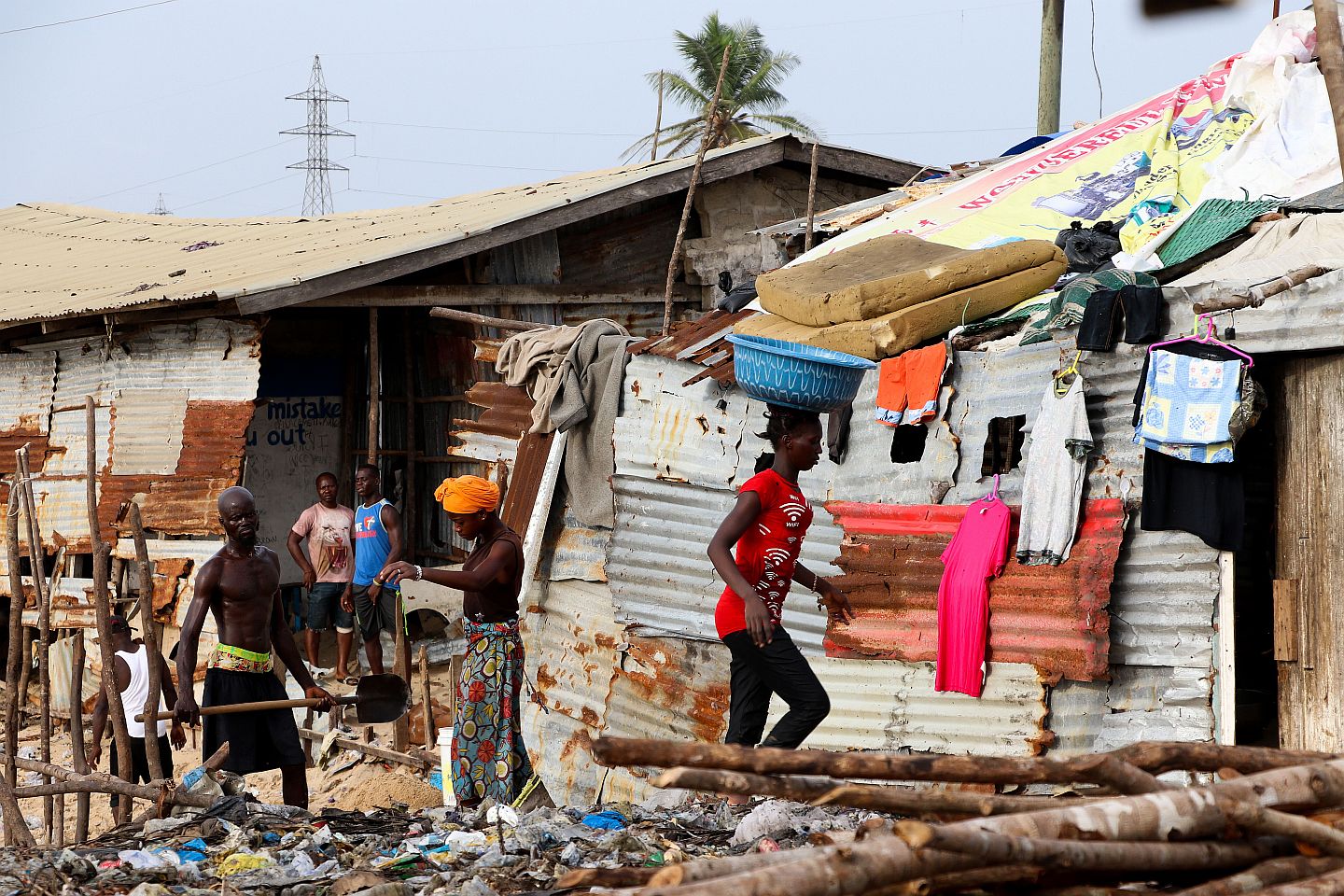This article was originally published on URBANET
By Laura Puttkamer, Urban Journalist
The 11th of November was Cities Day at the recent climate conference COP26 in Glasgow. Together with BMZ and Cities Alliance, GIZ organised an event entitled “Cities built4climate – Shaping the global transformation in construction”. Considering that the construction sector is responsible for about 40 per cent of global CO2 emissions, it is particularly relevant to find ways to cut down emissions in construction.
“Construction is an essential sector for achieving the Paris Agreement”, Martina Otto, Head of UNEP’s work on cities, said in her introductory speech. She outlined the challenge of making buildings more efficient and resilient and at the same time more liveable. By addressing the quantitative and qualitative housing crisis, the construction sector can tackle the economic and social agenda at the heart of sustainable development. “A typical building built today will still be standing in 2070, but it will encounter a very different climate”, Ms Otto explained to underline the urgency of building better. But what could that look like?
Tackling the Paris Agreement and the SDGs in an Integrated Manner
Dr Heike Henn of the German Federal Ministry for Economic Cooperation and Development (BMZ) explained that in the Ministry’s new core strategy on climate and energy, sustainable urban development is key. “The necessity to act and get our act together is really there”, she stressed. “In the next 30 years, we will build as much as we have built over the last 3,000 years” – and in Africa, many cities we will see in 30 years have not even been built yet. This is both a challenge and an opportunity. The construction sector needs to drastically cut its CO2 emissions while providing liveable, resilient accommodation for millions and millions of people.
“The link between the SDGs and the Paris Agreement is very apparent: from the BMZ perspective, one cannot be achieved without the other. So we really have to work in an integrated and connected way. We have to plan differently for the future” – with these words, Dr Henn challenged the traditionally rather conservative construction sector to leave its comfort zone. Apart from the private sector, politicians also play a big role in the way forward, for example through market incentives that “get the private sector moving”. The potential of nature-based solutions and the opportunities and jobs in local value chains are of particular interest to the BMZ since they positively contribute towards the climate and the SDGs. Two new projects, “Transforming the Built Environment Through Sustainable materials” and “Urbanisation Made in Africa”, show how BMZ focuses on integrated approaches and action at the local level.
Building Timber Cities
In his keynote speech, Professor Schellnhuber, Founder and Managing Director of Bauhaus der Erde called for restoration measures. “We need to reconstruct the built environment, and we need to restore the global climate”, he said.
In his work, Professor Schellnhuber calls for turning our built environment into timber cities. The 2020 paper “Buildings as a global carbon sink” made a big splash. In it, Schellnhuber and his team explain how to harvest biomass such as wood and use it as construction material. Wood is carbon-positive, regenerative, and can even remove CO2 from the atmosphere. “This is the silver bullet we have been searching for”, Schellnhuber proclaimed.
He pointed out that the African continent will decide the fate of our planet. With more than 9 billion people projected to live on Earth in 2050, we will have to provide shelter for at least 2 billion more – many of them on the African continent. If 90 per cent of these buildings were constructed from wood, rather than concrete and steel, we could get rid of countless tons of CO2 emissions and even reach a positive CO2 balance in the construction sector. “What would happen if we moved to a circular bio-economy in combination with digitalisation?” – this is the question that drives Prof Schellnhuber.
Integrated Urban Planning, Better Policies and a Cultural Change
The panel discussion exemplified what an integrated approach to improvements in the construction sector could look like. Different stakeholders discussed the urgency of change. Edgar Pieterse, Director of the African Centre for Cities, talked about the rapid urbanisation in Africa, where many countries still have not fully embraced the transformation towards sustainable urban planning. At the same time, about 60 to 70 per cent of the continent’s population live in informal settlements. The focus on slum-upgrading programmes often neglects environmental and sustainable standards and it is left to households and communities to provide solutions. He called for “highly contextual, city- and neighbourhood specific solutions” to translate sustainable construction debates into contexts that are marked by large-scale poverty, informal livelihoods, and climate-change related challenges.
Anaclaudia Rossbach, Regional Manager Latin America at Cities Alliance, pointed out the importance of land when looking for social inclusion and justice in the climate change and construction debate. “When we talk about the sustainability of construction, we also need to talk about location”, she said. According to her, it is key to consider the social and the environmental function of land, for example by maximising and recycling existing built environments, but also by looking at vacant and empty spaces. She also called attention to the importance of having structured housing policies, rights-based approaches, and innovative ideas on how to work with people recycling and upgrading informal settlements by themselves.
Mr Ernest Dione, GlobalABC National Focal Point and Senegalese Minister of Environment, spoke about the importance of materials. He explained that large parts of construction materials are still steel, concrete, and glass. But in Senegal, constructors are looking for “constructive solutions that can build up tomorrow’s cities”. Low-carbon materials with a high eco-potential can be reused. They are often more efficient, better for health, for acoustics, and for overall liveability. However, there is also a big challenge: “With these materials, we lost the know-how by disregarding them to the benefit of steel. (…) Today, we need to change the consumer perception which is linked to social status.” He concluded that we need to get better at making the case of benefits for the use of these materials, which also required political framework conditions.
Dr Susanne Lottermoser, Head of Directorate Urban Development at the German Federal Ministry of the Interior, Building and Community (BMI), gave an overview of the Ministry’s understanding of integrated sustainable urban construction. “Good urban planning should be THE starting point for sustainable planning discussion”, she emphasised, pointing to the New Leipzig Charter. Good planning procedures can combine challenges such as climate protection, mobility, affordable housing, and related matters. These are the cornerstones of this approach:
- People: liveable cities thrive when participation and co-creation are widely spread.
- Inclusive, affordable, and resilient living environments are common goods.
- A place-based approach allows planners to find individual solutions for each place.
- A supportive institutional environment can empower cities as key actors to implement the New Urban Agenda and the New Leipzig Charta.
“BMI thinks that you can only build sustainably if you plan sustainably beforehand, in an integrated manner, in a way that allows for climate awareness in all steps of planning”, she concluded. To achieve this, the BMI calls for concept competitions instead of tendering procedures.
The panellists agreed that planning is key to meet capacities and guide better investments to provide more environmentally friendly and inclusive construction. Local resources and a landscape approach to planning, such as in the “Timber City” idea, can be used as levers for integrated sustainable construction.
Both cultural and political challenges often obstruct sustainable construction. The importance of social status when considering building materials is particularly dangerous in Africa, where construction is still about to pick up the pace. Collaboration at the local level and at the global level, as well as knowledge exchange, will be key to meeting climate goals and reclaiming the principles laid out in the New Urban Agenda. “We need to put together all our actions, capacities and compassion to provide decent housing for the billions within the planetary boundaries”, Prof Schellnhuber concluded.
Disclaimer: The views expressed in this publication are those of the author and do not necessarily reflect the corporate policies or viewpoints of Cities Alliance, its members, or UNOPS.

Laura Puttkamer






